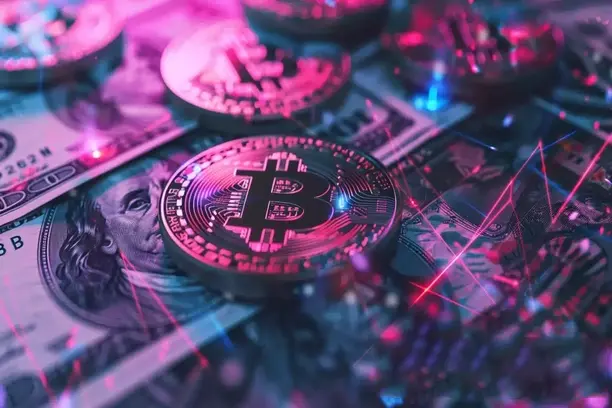Why is the supply of Bitcoin limited? This is a concern for many cryptocurrency enthusiasts and investors. The total number of Bitcoins is designed to be 21 million, which was set by the founder of Bitcoin, Satoshi Nakamoto, in a white paper. The reason for this limit is not only to prevent inflation, but also closely related to the development concept of Bitcoin and its decentralized nature. This article will delve into the background of the limited supply of Bitcoin and its impact on the cryptocurrency market.

Why is the supply of Bitcoin limited?
The limited supply of Bitcoin stems from the original design of its founder, Satoshi Nakamoto. In the Bitcoin white paper, Satoshi Nakamoto made a clear stipulation that the total amount of Bitcoin would never exceed 21 million pieces. This design not only reflects the decentralized nature of Bitcoin, but also aims to prevent inflation and ensure the stability of its value. Unlike traditional fiat currencies such as the U.S. dollar or the Renminbi, Bitcoin cannot be issued at will by central banks or government agencies, making it a limited and scarce asset.
The Impact of Bitcoin Supply Limits: Scarcity and Value
The upper limit on the supply of Bitcoin gives it characteristics similar to "digital gold". Gold is inherently finite, making it a widely recognized asset for preserving value. Similarly, since the total number of Bitcoins cannot exceed 21 million, this scarcity makes Bitcoins more attractive in the long term, especially as global economic uncertainty intensifies. Many investors see Bitcoin as a hedge against inflation, especially if monetary policy is too loose and the value of the fiat currency declines.
The relationship between the supply and value of Bitcoin can be explained by the interaction between demand and supply in the market. Since there is a limited amount of Bitcoin, when demand increases, this will push up its price. This is one of the reasons why the price of Bitcoin is more volatile but its value tends to increase in the long run.
Bitcoin Issuance Mechanism: Block Award and Halving Events
The supply of Bitcoin grows through a mechanism called block reward. This means that miners in the Bitcoin network maintain and update the block chain by solving complex mathematical problems. Every time a new block is successfully mined and added to the blockchain, the miners are rewarded with a certain number of Bitcoins.
Bitcoin prizes diminish over time. This process is called "Bitcoin Halving". Every 210,000 blocks of Bitcoin (about every four years), a halving occurs and the number of rewards is cut in half. This mechanism means that the growth in the supply of Bitcoin will slow down over time until it eventually reaches a limit of 21 million pieces.
The impact of a Bitcoin halving is not limited to supply, but also has an impact on the market price. After each halving event, the supply of Bitcoin in the market decreases, but demand may remain stable or increase, which usually triggers an increase in the price of Bitcoin.
Bitcoin's decentralized nature in relation to supply constraints
One of the design concepts of Bitcoin is decentralization, which means that it does not rely on any centralized institution or government to manage its issuance and circulation. This decentralization feature enables Bitcoin to avoid the influence of the traditional financial system and provide higher transparency and security. The supply limit is an important factor in safeguarding this decentralized feature.

When the supply of Bitcoin is fixed at 21 million pieces, no central authority can control the amount issued or intervene in the market, unlike traditional fiat currencies. This design ensures the fairness and credibility of Bitcoin as a currency that maintains its preset supply limit in any country or region.
Why won't the Bitcoin supply cap change?
Since Bitcoin's supply limit is designed into its core protocol, this limit cannot be easily changed. Although Bitcoin's source code is open source and can be viewed and modified by anyone, changes to Bitcoin's basic rules (such as the total supply limit) require the consent of a majority of network participants. This is because the decentralized nature of Bitcoin gives each node in the network a vote, and any changes must go through a consensus mechanism.
Changing the supply cap on Bitcoin could lead to a trust crisis. The value of Bitcoin is largely due to the scarcity and stability of its supply, and a change in this design could jeopardize investor confidence, which in turn could affect the market value of Bitcoin.
As a result, the current consensus is that the total amount of Bitcoin will always remain at 21 million pieces, despite the fact that there have been some proposals to change the upper limit of the Bitcoin supply.
The Long-Term Impact of a Limited Supply of Bitcoin on the Markets
As the Bitcoin issuance process comes to an end, more and more Bitcoins will enter the liquid market, and the rate of issuance of these Bitcoins will become slower and slower. It is expected that by around 2140, Bitcoin will be completely "mined" and no new Bitcoin will enter the market. This means that Bitcoin will become a fully liquid, finite asset.
This has far-reaching implications for the long-term development of the market. As the supply of new Bitcoin ceases, miners will have to rely on transaction fees to maintain operations, rather than relying on block bonuses. This could lead to changes in the security of the Bitcoin network, transaction speeds and fees, which could have a profound impact on the cryptocurrency market as a whole.
Conclusion
The limited supply of Bitcoin stems from the design philosophy of its founder, Satoshi Nakamoto, which aimed to prevent inflation and ensure the stability of its value by capping its total number. This design not only contributed to the scarcity of Bitcoin, but also made it an asset with long-term value preservation potential. As the halving mechanism for Bitcoin progresses and the issuance rate slows, Bitcoin will continue to play an important role in the global marketplace. For investors, understanding the limits of Bitcoin supply and its impact on the market will help them better capitalize on future investment opportunities.














